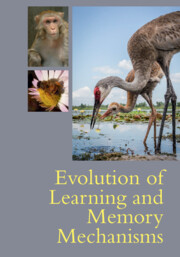Part II - Evolution of Memory Processes
Published online by Cambridge University Press: 26 May 2022
Summary

- Type
- Chapter
- Information
- Evolution of Learning and Memory Mechanisms , pp. 283 - 472Publisher: Cambridge University PressPrint publication year: 2022



